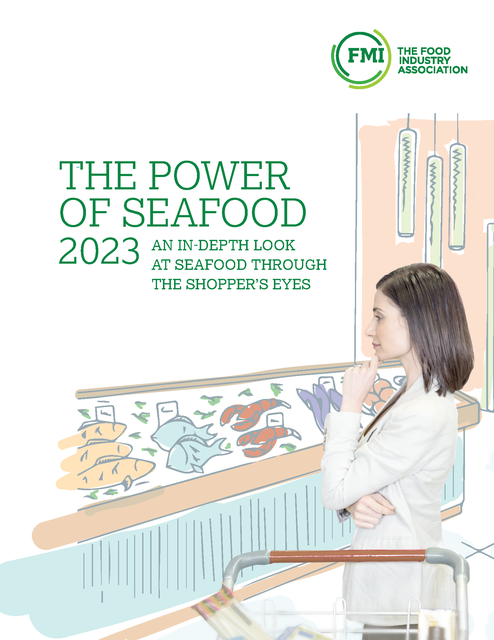Seafood department sales totaled $16.2 billion in 2022, a 3.8 percent decrease over 2021 as inflation raised the prices of fresh and frozen seafood, according to the fifth annual Power of Seafood 2023 report by The Food Industry Association.
The drop in sales reversed a COVID pandemic trend of record sales, although seafood sales were still higher in 2022 than in 2019. The report noted that this demand is driven in part by shoppers’ desire to both eat healthier and include more environmentally friendly options in their diet.
“Inflationary price increases certainly had a negative impact on the sale and consumption of seafood in 2022, with many shoppers turning to more affordable proteins as they adjusted their spending habits to the economic environment,” said Rick Stein, VP for fresh foods at FMI, in a statement. “However, seafood sales were up compared to 2019 despite elevated prices, indicating that shoppers who became more comfortable cooking seafood during the pandemic continue to appreciate the health benefits of preparing seafood at home. We expect the category to rebound once inflationary pressures ease."
The report found that frozen seafood outpaced fresh in 2022, accounting for $7.1 billion in sales compared to $6.5 billion for fresh seafood. Between 2021 and 2022, fresh and frozen seafood sales fell: fresh declined by 8.45 percent and frozen by 2.8 percent.
The percentage of frequent and occasional shoppers in the category declined from 59 percent of shoppers in 2021 to 53 percent of shoppers in 2022. Of these consumers, 55 percent, however, cook seafood more often.
Most seafood consumers prepare and eat most of their seafood at home, with only 13 percent buying seafood partially or fully prepared at the grocery store. The report also found that 14 percent purchase takeout from a restaurant to eat at home, and 20 percent order seafood while dining at a restaurant.
Related: Consumers Shift to More Affordable Produce; Shoppers Seek Value When Purchasing Meat

